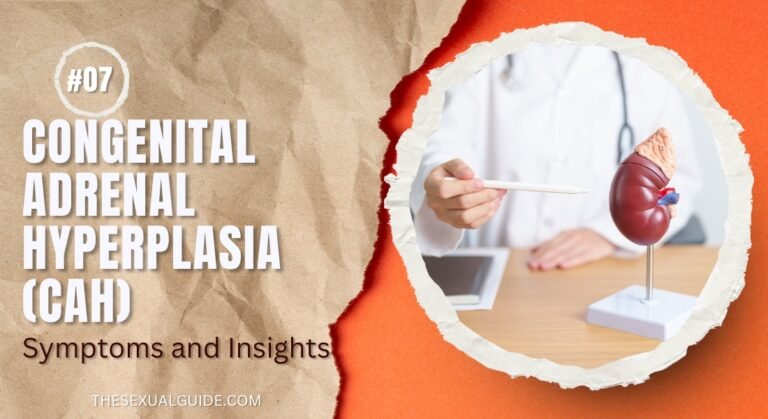Multiple orgasms have long been a topic of fascination and intrigue.
Understanding the science behind them can explain the experience and provide clarity into achieving multiple climaxes.
Understanding Multiple Orgasms
A multiple orgasm occurs when an individual experiences more than one climax during a single sexual encounter without a significant refractory period in between.
This phenomenon is more commonly reported in women, but men can also experience multiple orgasms under certain conditions.
The Physiology Behind Orgasms
Orgasms involve a complex interplay of neurological and physiological responses:
- Arousal Phase: Increased heart rate, blood pressure, and blood flow to the genital area.
- Plateau Phase: Heightened sensitivity and tension build-up.
- Orgasm Phase: Involuntary muscle contractions release sexual tension.
- Resolution Phase: Body returns to its baseline state.
In men, the refractory period, a recovery phase during which achieving another erection is difficult, typically follows the orgasm phase. Women, however, may not experience a refractory period, allowing the possibility for multiple orgasms.
Factors Influencing Multiple Orgasms
Several factors can influence the ability to experience multiple orgasms:
- Gender Differences: Women generally have a shorter or nonexistent refractory period, facilitating multiple climaxes.
- Age: Younger individuals may have shorter refractory periods.
- Physical Conditioning: Regular exercise, particularly pelvic floor exercises, can enhance sexual stamina.
- Mental State: Reduced stress and increased focus on bodily sensations can improve orgasmic potential.
Techniques to Achieve Multiple Orgasms
While individual experiences vary, the following strategies may enhance the likelihood of multiple orgasms:
1. Practice Edging
Edging involves nearing orgasm and then reducing stimulation to delay climax. This technique can increase control over orgasm and intensify subsequent climaxes.
2. Strengthen Pelvic Floor Muscles
Performing Kegel exercises can enhance muscle control during sexual activity, potentially leading to more intense and multiple orgasms.
3. Vary Stimulation
Altering the type, intensity, and location of stimulation can prevent desensitization and maintain arousal levels. For example, combining clitoral and vaginal stimulation may be effective.
4. Use Lubrication
Adequate lubrication reduces discomfort and enhances sensitivity, facilitating prolonged sexual activity.
5. Focus on Mental Relaxation
Reducing anxiety and being present in the moment can enhance sexual pleasure and increase the likelihood of multiple orgasms.
Expert Insights
Research indicates that most women have the capacity for multiple orgasms, yet only about 15% report experiencing them regularly.
Factors such as relationship quality and the variety of sexual activities can influence this experience.
Engaging in diverse sexual practices, including oral sex and manual stimulation, correlates with a higher frequency of multiple orgasms.
For men, achieving multiple orgasms often involves learning to separate orgasm from ejaculation.
Practices such as edging and strengthening pelvic floor muscles can be beneficial.
However, physiological differences mean that multiple orgasms are less common in men than in women.
Addressing Sexual Dysfunction
Conditions like erectile dysfunction (ED) can impact the ability to experience multiple orgasms.
Open communication with a healthcare provider is essential for diagnosis and treatment.
Trusted providers like LibidoDepot offer solutions to manage ED effectively.
Conclusion
Understanding the science of multiple orgasms reveals that, while individual experiences vary, certain techniques and factors can enhance the potential for multiple climaxes.
Focusing on physical health, mental relaxation, and open communication with partners can enrich sexual experiences.
Want to learn more? Visit LibidoDepot for trusted solutions and resources to support your intimate health.
FAQs: The Science of Multiple Orgasms
1. What are multiple orgasms and how do they occur?
Multiple orgasms refer to the experience of having more than one orgasm within a short period without a significant refractory period, especially common among some women and a few trained men. This is typically achieved through specific techniques and control over arousal and climax.
2. Can men experience multiple orgasms?
Yes, although it’s less common, some men can train themselves to have multiple orgasms by learning to separate orgasm from ejaculation through techniques like pelvic floor exercises, breath control, and edging.
3. Are multiple orgasms linked to better sexual health?
While not necessary for sexual satisfaction, multiple orgasms can enhance pleasure and intimacy. Some studies suggest that frequent orgasms may contribute to improved mood, stress reduction, and increased pelvic health.
4. Is there a scientific explanation for multiple orgasms in women?
Yes, research shows that women generally don’t have a refractory period like men do, which allows for repeated stimulation and climax. Neurological, hormonal, and muscular factors all play a role in this capacity.
References
- Understanding the Multiorgasmic Experience in Women
- Female Multiple Orgasm: An Exploratory Internet-Based Survey
- Multiple Orgasms in Men, What We Know So Far
- What are Multiple Orgasms? How Common are They?
- The Search for the Multiple Orgasm. Does It Really Exist?
- How Many Times Can a Woman Orgasm in a Row?






